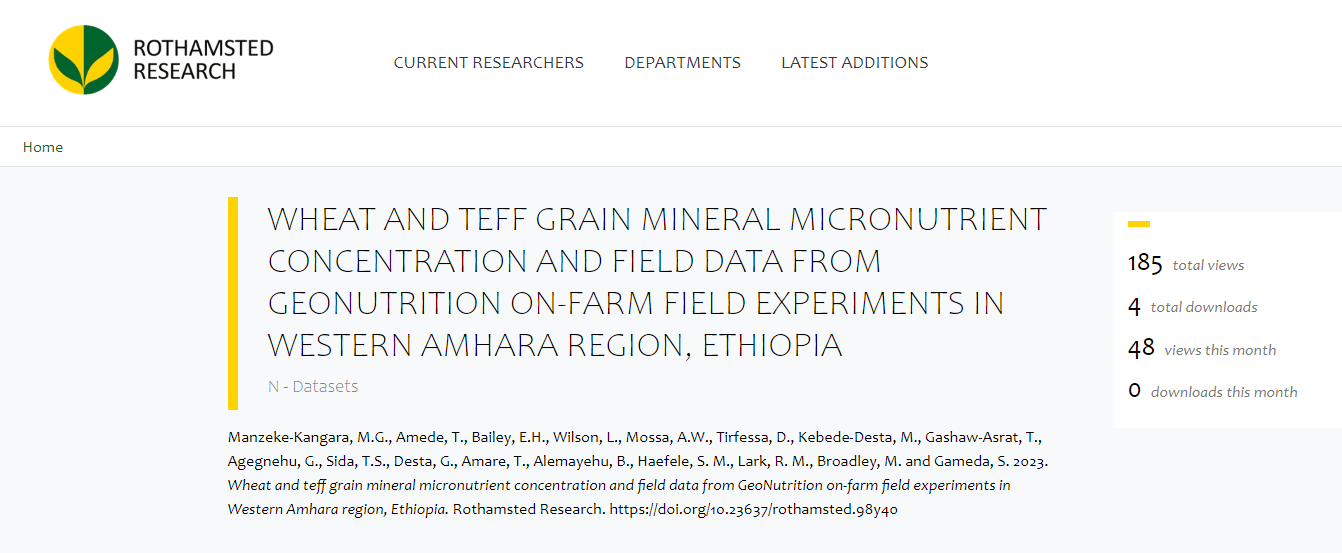WHEAT AND TEFF GRAIN MINERAL MICRONUTRIENT CONCENTRATION AND FIELD DATA FROM GEONUTRITION ON-FARM FIELD EXPERIMENTS IN WESTERN AMHARA REGION, ETHIOPIA
The data set comprises primary data for the concentration of over 25 mineral micronutrients including zinc (Zn) and selenium (Se) in wheat (Triticum aestivum L.) and teff (Eragrostis tef (Zucc.) Trotter) grown over two cropping seasons (2018 and 2019) in the Western Amhara region of Ethiopia. Wheat and teff were grown across a landscape gradient (hill slope, mid-slope, foot slope) and supplied with different rates of mineral nitrogen fertilizer and different Zn and Se fertilizer application methods (basal, basal + side dressing, basal + foliar fertilizer) across different farms. The data set also comprises of field data including specific study site, crop variety, fertilizer rates, and crop yields. Wheat experiments were performed in Debre Mewi and Markuma, and experiments with teff were performed in Debre Mewi and Aba Gerima. The concentrations of micronutrients in grain were measured using inductively coupled plasma mass spectrometry (ICP-MS). Laboratory standards, sample replicates and blank samples were included for quality assurance. The work provide insights on an effect of Zn, Se and N fertilizer, landscape position, and its interaction with micronutrient fertilizers on grain micronutrient concentrations. Agronomic biofortification of wheat and teff with micronutrient fertilizers was influenced by landscape position, the micronutrient fertilizer application method and N fertilizer management. The complexity of smallholder environmental settings and different farmer socio-economic opportunities calls for the optimization of nutritional agronomy landscape trials, with targeted application of micronutrient fertilizers across a landscape gradient required as an additional factor for consideration in ongoing agronomic biofortification interventions.

